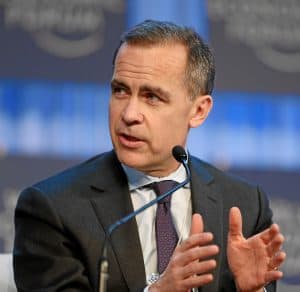It was judgement day for the City’s public and private sector organisations as the deadline to submit their gender pay gap reports for the past financial year finally arrived amid fevered scrutiny.
Public bodies such as the City Corporation, local police force, and Barts Health NHS Trust all submitted their key findings in time for the 30 March cut off, with the Square Mile’s financial giants falling in line by 4 April.
The numbers tallied favourably for City of London Police as well as the local authority, with the two organisations reporting discrepancies of 2.7% and 8.1% in average hourly earnings respectively.
However, in terms of bonuses, women are still being short changed in both camps; with female officers and Corporation workers picking up 22% and 14% less than their male counterparts on average.

“We are fully committed to providing equal pay and opportunity to all our employees,” said a City Corporation spokesperson in riposte.
“We have introduced new policies to achieve this, including improved maternity pay and shared parental and adoption leave.
“Our recruitment process for senior positions is now gender anonymised and our recruitment staff receive unconscious bias and diversity training.”
But while the authority was able to boast a balanced proporation of male and female employees across its entire operation – with 43% of upper quartile, 51% of upper middle quartile, 47% of lower middle quartile, and 46% of lower quartile jobs occupied by women – the same could not be said for City police.
According to its report, less than a fifth (18%) of top jobs are held by women, while less than a quarter of all posts (23.5%) have a female occupant.
There was a more damning picture painted at Barts Health, where the pay gap has stretched to 20.2% despite three quarters of the work force being female.

A statement from the trust said that because four out of five female employees were working in bands 1-7 (bands 8a-8d and band 9 being considered senior or consultant positions) a sizeable difference in pay between men and women was “inevitable”.
It read: “We should keep in mind that this is an average across all roles and nearly all aspects of pay, and it is the detail behind these headlines which tells us more.
“This is not a statement about equal pay, which is the difference between individuals or groups performing the same kind of work. The gender pay gap refers to the differences between the earnings of men and women regardless of roles or seniority.
“Most NHS trusts are only now publishing data for the first time, so it is too early to make definitive comparisons. Our data includes pay for bank work, but not employees of Serco, who provide our facilities management staff.”
Under CEO Alwen Williams the organisation says it is determined to narrow the gap in time for future reports.
“We would expect this gap to reduce in future as the balance of our medical workforce continues to change, with more female doctors progressing through their careers to become consultants, and in turn applying for clinical excellence awards.
“The trust is already underway with activities which will help close the gender pay gap over time and the new pay deal also helps with making work more flexible.
“Over the coming months, more work will be undertaken to understand these findings better and ensure that we have enough in place to make a meaningful difference.”
Meanwhile, in the private sector, the City’s major players have also shed a light on pay structures dominated by those with a ‘Y’ chromosome.
Lloyd’s of London, reported a 27.7% divide in pay, and CEO Inga Beale admits there is significant work to be done to further tackle the “systemic issue”.
The insurance giant has a 50:50 gender balance across its executive committee, but there is almost double the number of men (66.2%) than women (33.8%) in the highest paying quartile. In the lowest paying quartile this is reversed, with over twice the amount of women (66.2%) than men (33.8%).
After announcing her firm’s figures, Ms Beale said: “While there has been good progress, particularly over the past 30 years, progress is simply not happening fast enough. We must turn this situation around, not just to benefit women, but to benefit the whole (insurance) sector.
“Reporting on our gender pay gap is an important step forward in tackling this long-standing and systemic issue. Lloyd’s already has in place a number of initiatives and policies to redress the gender imbalance, particularly in our talent pipeline.
“We will continue to highlight and take decisive action on closing the gender pay gap within the Lloyd’s Corporation, and act as a leader across the global insurance sector.
“Empowering our talent to fulfil their true potential is crucial to our future. We are committed to celebrating and seeking diversity in all its forms, guided by a gender balanced senior leadership that is as diverse as our global reach.”
Mimecast Services was one of the worst offenders among City-based tech firms , filing a pay gap of 43.4%, while the Bank of England posted a gap of 21%, despite pointing to its other internal philosophies designed to promote equality and diversity.

“The Bank of England recognises that to pursue its mission of promoting the good of the people of the UK, it must reflect the diversity of the people it serves,” said governor Mark Carney.
“That’s why, three years ago we made ‘Diverse and Talented’ the first pillar of our inaugural strategic plan. To support our objectives, we have introduced diversity targets, including an aim to have 35% female representation in senior roles by 2020.
“We have made steady progress towards that objective since it was set, moving from 20% senior female representation in 2014 to 30% in 2017.
“We must also support equality through fair pay. We’re confident that men and women are paid equally for doing the same job at the Bank; however, the greater proportion of men than women in senior roles creates a gender pay gap.
“We are working hard to address this imbalance through inclusive and diverse recruitment, including diverse shortlists and interview panels, offering flexible working, providing continual unconscious bias training, and fostering an inclusive culture.
“Addressing the disparity in gender representation at senior levels will take time, but it will help close the current gender pay gap at the Bank.”
The submissions, which were undertaken by companies across the UK with more than 250 employees, have given life to the #PayMeToo campaign; a movement initiated by a cross-party group of MPs seeking to use the freshly collected data to monitor changes to the working landscape in the future.
Walthamstow Labour MP Stella Creasy is fronting the campaign, and has timed its launch to coincide with the report submission deadline.
“You have the right to discuss these issues at work and with colleagues as well as to raise them with your manager to hold them to account for what they are doing to tackle this gap,” said a statement on the campaign’s website.
“Article 10 of the European Convention on Human Rights guarantees employees freedom of expression in the workplace. Section 77 of the Equality Act 2010 specifically says that any part of an employment contract which seeks to stop you from talking about pay in order to work out if you (or a colleague) is experiencing pay discrimination is unenforceable.
“If you are a member of a trade union, any attempt to restrict your right to express an opinion on these issues may also contradict your rights as set out under sections 146 and 152 of the Trade Union and Labour elations (Consolidation) Act 1992.”
Cover image by Colin (Creative Commons).







